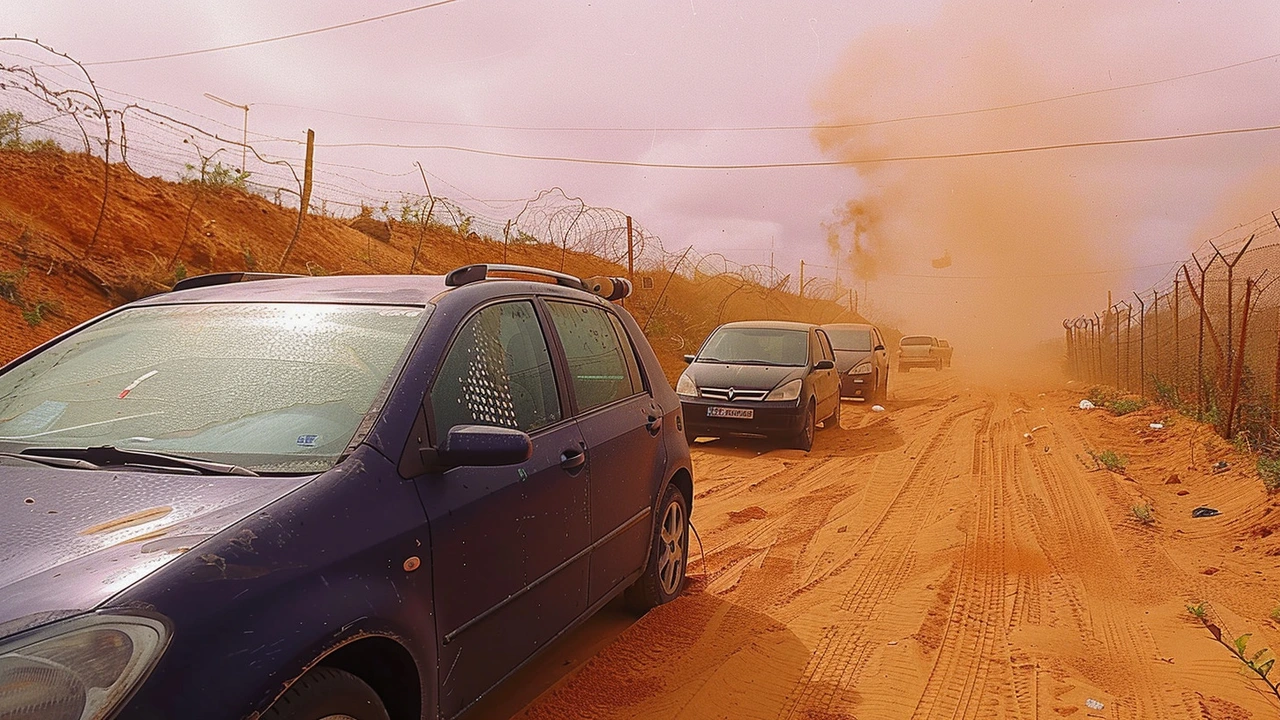North African Saharan Dust Heads Towards Portugal, Bringing Hazy Skies and Health Warnings

North African Saharan Dust Heads Towards Portugal
Calima Phenomenon Causes Hazy Skies
Portugal is bracing for another wave of North African dust in the coming days, a phenomenon known locally as 'calima.' This event occurs when strong winds in the Sahara Desert lift massive amounts of dust particles into the atmosphere, which are then transported across the Atlantic Ocean reaching European shores. This natural process notably affects several Western European countries, including Portugal, Spain, and even the UK.
The Portuguese Institute of the Sea and the Atmosphere (IPMA) has predicted that this dust will begin to descend on Portugal from Tuesday, bringing with it significant changes to the local weather. Residents should expect to see hazy skies and experience substantially reduced visibility. Such changes are often immediately noticeable, as the sky adopts a grayish or orange tint, primarily attributed to the large concentration of airborne dust particles.
Health and Safety Warnings
Alongside the meteorological forecast, the IPMA has issued a health advisory for the Portuguese population. The hover of fine dust particles in the air presents potential risks, particularly for individuals with pre-existing respiratory conditions. Residents suffering from asthma, bronchitis, or other respiratory issues are urged to take precautionary measures. Experts recommend limiting outdoor activities, keeping windows and doors closed, and using air purifiers if possible. For those who have no choice but to go outside, wearing medical masks could provide some level of protection against inhaling airborne particles.
Impact on Daily Life
This Saharan dust episode, although a natural meteorological phenomenon, has a profound impact on daily life in affected regions. Not only does it lead to poor air quality, but it also affects public health and daily activities. Individuals who spend a lot of time outdoors, such as construction workers, farmers, and athletes, are advised to reduce their exposure by taking frequent breaks and staying hydrated. In urban areas, the thick layer of dust that often settles on surfaces necessitates increased cleaning efforts. Cars, windows, and outdoor furniture quickly accumulate a fine layer of orange or grayish dust, prompting residents to undertake regular cleaning tasks.
Economic Implications
Apart from its environmental and health impacts, calima also has economic implications. Agriculture, one of Portugal's significant industries, can be particularly affected. Dust settling on crops can act as a barrier against photosynthesis, leading to slowed growth and reduced yields. In severe cases, the dust can even cause mechanical damage to delicate plants. Additionally, visibility issues on roads and highways can pose another layer of challenge, potentially leading to traffic disruptions and increased risk of accidents.
Scientific Research and Future Outlook
Scientific research on calima phenomena has significantly advanced over the years. Meteorologists employ sophisticated satellite imagery and models to predict the occurrence and movement of Saharan dust storms. While these efforts have certainly improved forecasting accuracy, challenges remain. The unpredictability of weather patterns means that residents and authorities often must adapt to rapidly changing situations. As climate change continues to influence weather events globally, the frequency and intensity of dust storms originating from the Sahara are likely to increase.
Global Impact
The effects of calima are not confined to Portugal alone. Neighboring Spain frequently experiences similar conditions, and even as far north as the United Kingdom, residents may notice the hazy skies and mild decline in air quality. For instance, when the sky appears unusually orange or red, it often indicates the presence of Saharan dust. This cross-continental transport of dust also plays a role in fertilizing areas far from its origin. Certain studies have highlighted that nutrient-rich particles carried from the Sahara contribute to soil fertility in the Amazon rainforest, illustrating the interconnectedness of these phenomena on a global scale.